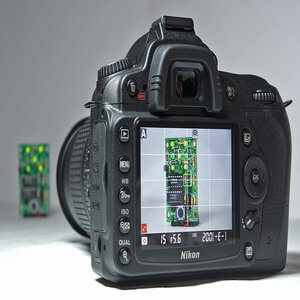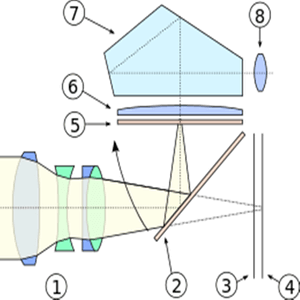What is the full form of DSLRDSLR: Digital single-lens reflexDSLR stands for digital single-lens reflex. It refers to a digital camera that integrates the optics and mechanism of the single-lens reflex camera with the digital imaging sensor. In simple words, it is a digital camera which uses a mirror to direct the light from the lens to the viewfinder. The viewfinder is a hole which lies on the back of the camera and is used to preview the image before you capture it. DSLR camera comes with interchangeable lenses. It enables you to swap lenses to get different views of a scene. 
DSLR Camera PartsThe key components of a DSLR camera are:

How a DSLR works
Some of the advantages of a DSLR camera over a simple digital camera:
DSLR or mirrorless?Photographers adore DSLRs for their robustness, versatility in terms of how many lenses and attachments they can connect with them, amazing battery life, greater shooting speeds, and improved autofocusing. Nevertheless, there is a discrepancy between what you see in the viewfinder and what is really exposed; this is a problem that mirrorless cameras don't have. Both feature options for image stabilisation and continuous shooting (or burst mode), but mirrorless cameras truly outperform DSLRs when it comes to video recording. To put it simply, a mirror in a DSLR makes video focusing more challenging than with a mirrorless camera, which can shoot full HD video more effectively. As the camera body just needs room for a sensor rather than a whole mirror system, mirrorless cameras are also lighter and smaller. The topic and environment you plan to photograph will determine which DSLR or camera is ideal for you. Armed with this knowledge, it should be simpler for you to find the ideal camera for you as different DSLR models and lenses provide various advantages. The Drawback of DSLRsWhile you may examine your photo immediately after taking it with a digital camera as opposed to developing film, what you see in the viewfinder might not exactly match what is exposed to the image sensor in a DSLR camera. This is due to the fact that DSLRs rely on the mirror for the portion of their focus, which is problematic, as noted by photographer Derek Boyd. It's possible that you won't get a clear view of what your camera actually caught until you've finished editing. With a mirrorless camera, what you see is precisely what is exposed to the sensor, so you get what you see. This makes it easier for you to make quick camera changes. DSLRs still allow for in-the-moment adjustments, but because of the difference between what is shown in the viewfinder and what is exposed to the sensor, there may end up being more problems to fix in editing. "It might take some time to become used to what your DSLR can accomplish when it comes to editing. When I switched to digital, it required some getting used to preparing a raw image before retouching or colour editing," says DSLR photographer Stephen Klise. "All the light and colour behaved differently from what I had learned; you got a lot of strong reds, which was quite new to me."
Next TopicFull Form
|
 For Videos Join Our Youtube Channel: Join Now
For Videos Join Our Youtube Channel: Join Now
Feedback
- Send your Feedback to [email protected]
Help Others, Please Share










